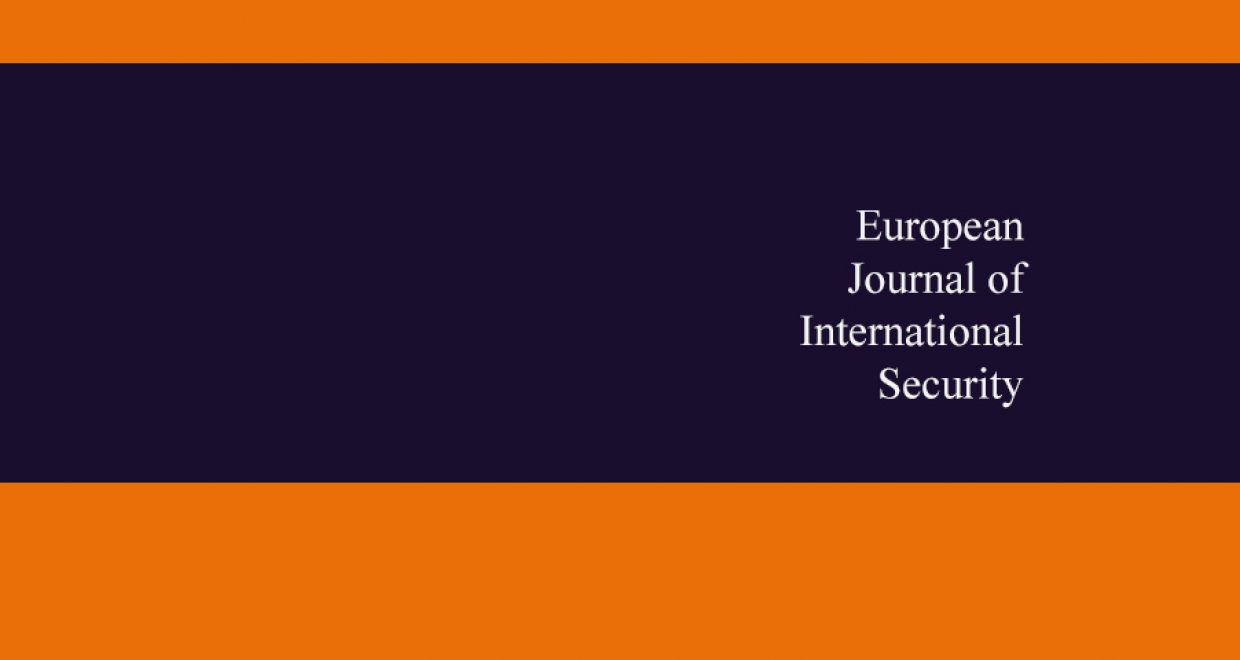From the Ontology of War to the Measurement of Fighting
Referencing his article in vol.5, no.1 of the European Journal of International Security, Matthew Ford explores the roles of science and technology in warfare.
In the 21st century, as armed forces look for novel ways to gain military advantage, they are turning to technologies that aim to deliver lethal effect without risk. In the process they both undermine the centrality of fighting to war and at the same time extend the reach of military violence into domains where it was previously not germane. This process has a long historical trajectory that stretches back to strategic bombing during the First World War but more recently became properly noticeable with the use of armed drones in the early phases of the Global War on Terror. Risk transfer now frames the US Department of Defense’s ambition to find ways to ‘improve soldier lethality’. Here the goal is to use technology to increase the chance of delivering lethal effect while minimizing friendly casualties. If implemented fully this will minimize clashes between combatants and by implication undermine the Clausewitzian assertion that fighting constitutes the ontology of war. This raises questions about Clausewitz’s ontology and calls for more attention on the place of science and technology in generating knowledge about warfare.
For Clausewitz war is neither an art nor a science but rather its essence lies in the clash of wills. Framed this way, war can only be known through the act of fighting. Fighting is concerned with the destruction of the enemy and their fighting powers. Merely enduring violence cannot be considered fighting, for it is an active and directed capacity, that has a sense beyond reciprocal slaughter. Generals can prepare for war by learning from history. Soldiers can prepare by drilling and training. But it is only at the point at which there is a clash of wills that war’s nature can be properly revealed.
According to Clausewitzians, then, a necessary feature of war is the interaction between at least two opposing forces. Out of this interaction war not only generates insights as to what it actually is, but it also reorders wider human understanding and reveals the relationships between truth and power. In this respect war is capable of both destroying old and generating new knowledge even as it re-shapes society and redefines what might be considered a socially acceptable truth.
Recognising the escalatory dynamic that sits at the heart of Clausewitz’s system of thinking, armed forces seek technological advantage over their adversaries so as to maintain battlefield dominance. In the 21st century this means directing military innovation towards optimizing ‘high-tech precision engagement, networked communications, and pervasive intelligence, surveillance and reconnaissance’ (Kilcullen 2020).
Taking this one step further and now focusing their attention on Artificial Intelligence, machine learning, autonomous vehicles and the Military Internet of Things, American armed forces are aiming to gather, process, fuse and analyze huge quantities of data in real time so that they can speed up and optimize decision-making. This means that American forces will be able to act more quickly than their adversaries, and these new technologies will reduce the exposure of their personnel to potential counterattack.
For those engaging in armed conflict with the United States the implications of these innovations are stark, potentially leaving weaker military powers impotent. Even more profoundly, at a philosophical level these innovations appear to render the Clausewitzian ontology of war redundant. For if war’s essence lies in fighting and technological superiority makes fighting pointless then is Clausewitz’s ontology superfluous?
Changes in technology have already prompted scholars to ask questions about the changing character of war. Critical scholars have observed that warfare is not so much about a fight between different actors but instead has taken on the characteristic of a hunt (Chamayou 2015). At the same time others have sought to reinforce the message that war’s nature is still defined through fighting (Brighton & Barkawi 2011). For these scholars, contemporary Western methods constitute something of a category mistake: the hunt may well be the current mode of engaging in the management of political violence but it does not mean that war has lost its essential characteristic.
But lurking between these conceptions of war and warfare lies an interpretation of war that has its roots in empiricism and science and the measurement of fighting. These modes of thinking have a long intellectual history that stretch to pre-and contemporary Clausewitzian thinkers like von Bulow and Jomini.
Given Clausewitz’s dominance in discussions of the philosophy of war, however, it is not surprising that alternative perspectives that rely on earlier conceptions of strategy can struggle to be heard. Nonetheless, it is still possible to see the echoes of the latent empiricist approach to understanding war in scientific discussions of the term lethality.
Sociological processes frame the construction of knowledge regimes within the armed forces. This reveals the military considerations that shape the legality of lethal ordnance and shows how science is subordinated to the exigencies of warfighters. More than this, these scientific debates also tell us something about how weapons and military equipment are used to measure and generate knowledge about the battlefield. This is practical knowledge, not a study in philosophical essences and matters relating to ontological reasoning. As such these modes of investigating the battlefield have an immediate utility both in terms of martial prowess but also in relation to what weapons tell us about warfare.
And this is an important observation to acknowledge. For the simple reality is that technology platforms deeply mediate our experience (Couldry & Hepp 2016), understanding and knowledge about war. This is the case whether we are talking about the social media sites that enable us to engage in and participate in war (Merrin 2018) or those military personnel who employ systems to enact war (Lindsay 2020). As complex socio-technical assemblages, weapons present opportunities to test what is happening on the battlefield, to identify what works and what does not and to measure relationships between events and actions.
The military-scientific complex has always sought to measure and optimize solutions for battle while protecting core military values and prejudices. Increasingly, however, as we witness a radical shift in the relationship between war, media, perception and power (Ford & Hoskins forthcoming) the datafication of battle implies a greater reliance on employing data analytics in an effort to identify correlations between military actions and outcomes in the hope of defining cause/effect relationships. This reinforces the idea that the measurement of fighting through scientific method and technological experiment are far more useful for helping us understand the nature of war than Clauswitzian conceptions of war’s ontology.
– Matthew Ford, Department of International Relations, University of Sussex.
– His EJIS article is available free of charge until the end of May 2020.





